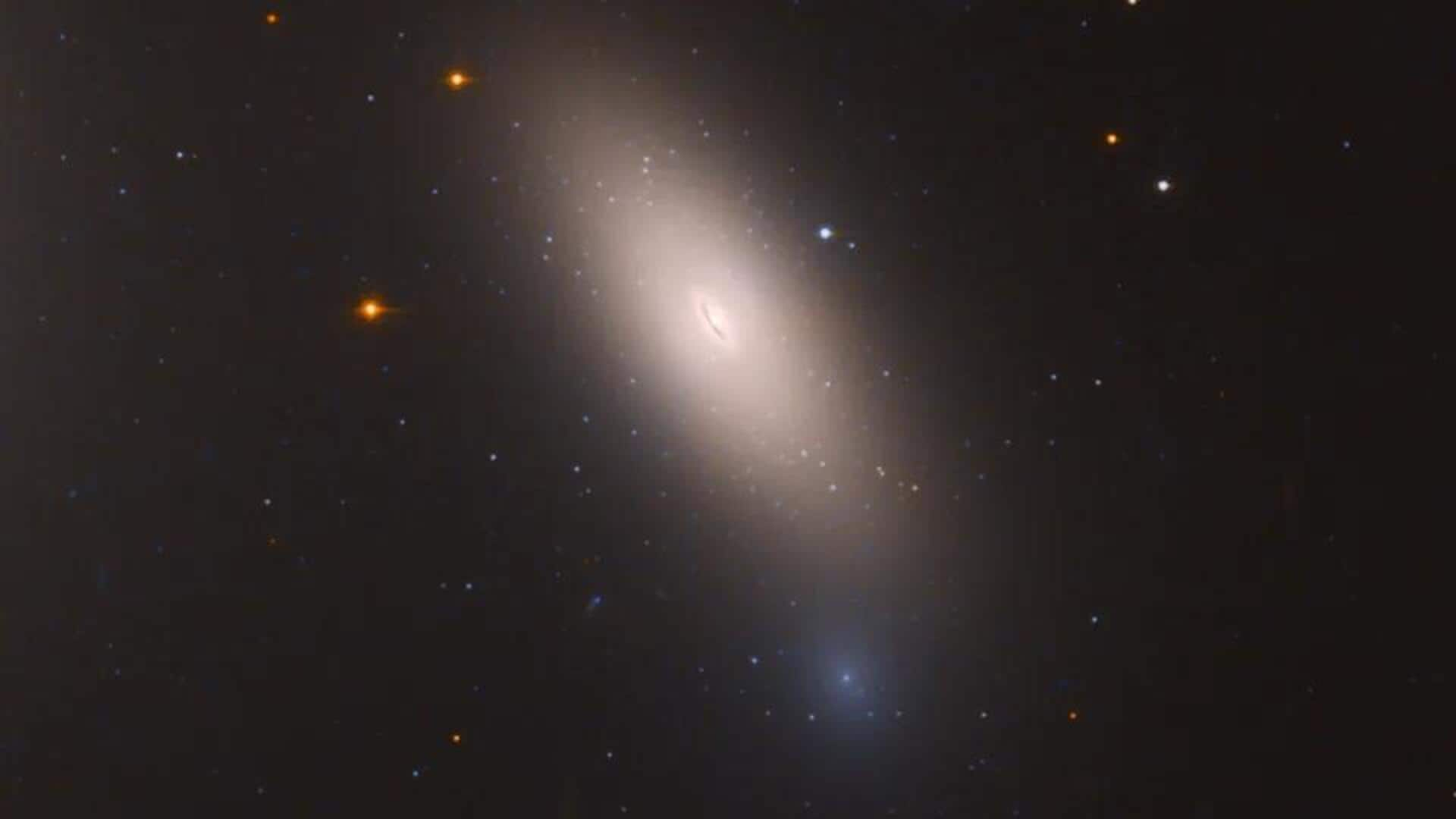
This 'fossil' galaxy can help us understand how universe evolved
What's the story
Astronomers have discovered a distant galaxy, dubbed KiDS J0842+0059, that has remained "frozen in time" for an estimated seven billion years. Initially seen by the Kilo Degree Survey (KiDS) in 2018, the Large Binocular Telescope (LBT) was later used to obtain high-resolution data. This cosmic fossil could provide crucial insights into the formation of early galaxies and the evolution of our universe.
Cosmic significance
Cosmic fossils can help us understand our universe's history
Just like dinosaur fossils help us understand life's evolution on Earth, KiDS J0842+0059 can help us understand cosmic evolution. This galaxy has remained unchanged by collisions and interactions with other galaxies, making it a pristine time capsule for studying earlier galaxies.
Discovery
Discovery of KiDS J0842+0059
Located three billion light-years away from Earth, KiDS J0842+0059 was discovered in 2018. The VLT Survey Telescope (VST) provided images of this galaxy, which were later refined by the Very Large Telescope (VLT) and its X-Shooter instrument. These observations revealed that KiDS J0842+0059 has a stellar mass about 100 billion times that of our Sun, but is more compact than similar galaxies.
Imaging advancements
LBT images confirm it is a fossil galaxy
KiDS J0842+0059 has not formed stars for most of its life, suggesting it is a fossil galaxy. To confirm this, the team used LBT's adaptive optics system to capture sharper images of this relic galaxy. These images were 10 times more detailed than those provided by KiDS. The data confirmed that KiDS J0842+0059 is indeed compact and a true galaxy relic with a shape similar to NGC 1277 and other compact galaxies observed in the early universe.
Research impact
Why the study is important?
The existence of galaxies such as NGC 1277 and KiDS J0842+0059 suggests that some galaxies can form quickly, remain compact, and stay dormant for billions of years by avoiding collisions with other galaxies. "Studying these cosmic fossils helps us reconstruct the formation history of today's massive galaxies," said team member of the study, Chiara Spiniello from the University of Oxford. The research was published in the Monthly Notices of the Royal Astronomical Society.